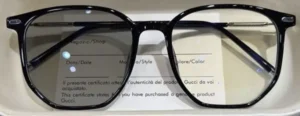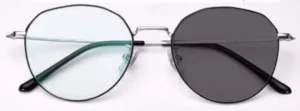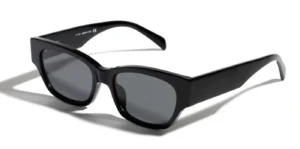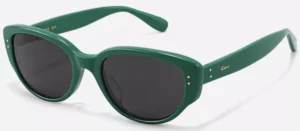As we all know, photochromic eyeglasses are widely recognized as a vision correction tool that also provides UV protection. However, it is essential to obtain high-quality photochromic glasses. Many people are curious about how to determine the quality of photochromic eyeglasses. If you want to know, please continue reading with our sunglasses manufacturers.
1. What are photochromic eyeglasses?
Photochromic eyeglasses are special glasses that can change their tint or darkness level based on the amount of sunlight they are exposed to. When you go outside and it’s sunny, the lenses get darker to protect your eyes from the bright sunlight.

When you go indoors or it’s not as sunny, the lenses become clear again. This means you don’t need to switch between regular glasses and sunglasses because the glasses automatically adjust to the light conditions. Photochromic eyeglasses are helpful for protecting your eyes from harmful UV rays and making your vision more comfortable in different lighting environments.
2. How to determine the quality of photochromic eyeglasses?
(1). Thickness
The thickness of both lenses should be consistent. Uneven thickness can affect vision and harm eye health. Even for single lenses, the thickness should be uniform, around 2mm for photochromic lenses, with smooth edges.
(2). Transition speed
Good-quality photochromic glasses should adapt quickly to changes in the environment. When exposed to sunlight for about 10 minutes, they should reach their maximum color intensity. Slow transition indicates poor quality. When moving the glasses from sunlight to a dark area, they should regain transparency within 20 minutes for high-quality photochromic lenses.
(3). UV protection
High-quality photochromic glasses should provide 100% protection against harmful UV rays, offering good protection for the wearer.

(4). Lens quality
The lens surface of qualified photochromic glasses should be free from scratches, spots, or abrasions. When observing the lens at an angle in light, it should have high clarity. There should be no stripes, bubbles, spots, or cracks inside the lens, and it should provide excellent light transmission.
(5). Comfort when wearing
Wearing photochromic glasses should not cause any discomfort, such as dizziness, glare, or blurred vision. When purchasing, hold the glasses with your hand, look through a single lens with one eye, and move the glasses up, down, left, and right. There should be no apparent movement or visual distortion of distant objects.

(6). Color consistency and transition
In good-quality photochromic glasses, both lenses should have the same color and transition uniformly. They should darken quickly when exposed to sunlight and regain transparency rapidly in dimmer conditions. Poor-quality photochromic lenses may transition slowly or have delayed transparency, and some may not change color at all despite claiming to be photochromic.
(7). Lens condition
The thickness of both lenses should be the same. If there is a noticeable difference in thickness, the lens colors may vary, which is not good for the eyes. Each lens should also have a uniform thickness. Additionally, check the lens surface for any stripes, bubbles, spots, or cracks. High-quality photochromic lenses should not have any scratches, spots, or abrasions on the surface. When held up to sunlight, the lenses should exhibit high clarity.
(8). Lens transition effectiveness
Currently, photochromic lenses are available in two colors: brown and gray. To assess the transition effect of photochromic eyeglasses, observe the speed of color change. Good-quality photochromic lenses should darken quickly when exposed to sunlight and return to a clear state rapidly in darker conditions. Generally, a faster transition speed is preferable. Other factors affecting transition effectiveness should also be considered, such as lens quality.

(9). Comfort when wearing
High-quality photochromic eyeglasses provide effective UV protection and offer good protection for the wearer. To determine their comfort, try wearing them. When purchasing, hold the glasses and look through one lens with one eye at a distant object, then move the glasses up, down, left, and right. The distant object should not appear to move or create a distorted perception. Then, put on the glasses and check for any discomfort symptoms, such as dizziness, eye strain, or blurred vision.
3. Characteristics of photochromic eyeglasses
- Check for any spots, scratches, stripes, bubbles, or cracks on the lens surface. Good-quality glasses should not have these issues.
- Observe the speed of lens color change when exposed to direct sunlight. Poor-quality glasses have slow color transition.

- Assess the thickness of the lenses. Both lenses of photochromic glasses should have consistent thickness; there should not be a significant difference in thickness between them.
- Comfort when wearing: Good glasses should provide a comfortable wearing experience without any discomfort, such as dizziness or blurred vision. Objects should appear clear and undistorted.
4. Advantages of photochromic eyeglasses
Photochromic lenses automatically change their color based on the intensity of sunlight, providing protection for the eyes, enhancing aesthetics, and reducing the irritation and damage caused by sunlight and UV rays.
5. Disadvantages of photochromic eyeglasses
The main drawback of photochromic eyeglasses is the slow fading of the tint. When transitioning from a bright environment to a dark one, there may be a temporary period of reduced visibility, which could potentially lead to accidents.
Conclusion:
In conclusion, Custom sunglasses manufacturers remind everyone, that photochromic eyeglasses are a type of eyewear that automatically adjusts its tint or darkness level in response to sunlight. They offer the convenience of having both regular clear lenses and sunglasses in a single pair of glasses.
When exposed to UV light, the lenses darken to provide protection against harmful rays, and they gradually become clear again when indoors or in low-light conditions. The quality of photochromic eyeglasses can be assessed by examining the condition of the lenses, evaluating the speed and effectiveness of the transition, and considering the comfort when wearing them.
While photochromic eyeglasses have advantages such as UV protection and convenience, they may have drawbacks such as slow fading of the tint and temporarily reduced visibility during transitions. Ultimately, it is important to choose high-quality photochromic eyeglasses that meet your specific needs and provide optimal comfort and eye protection.




